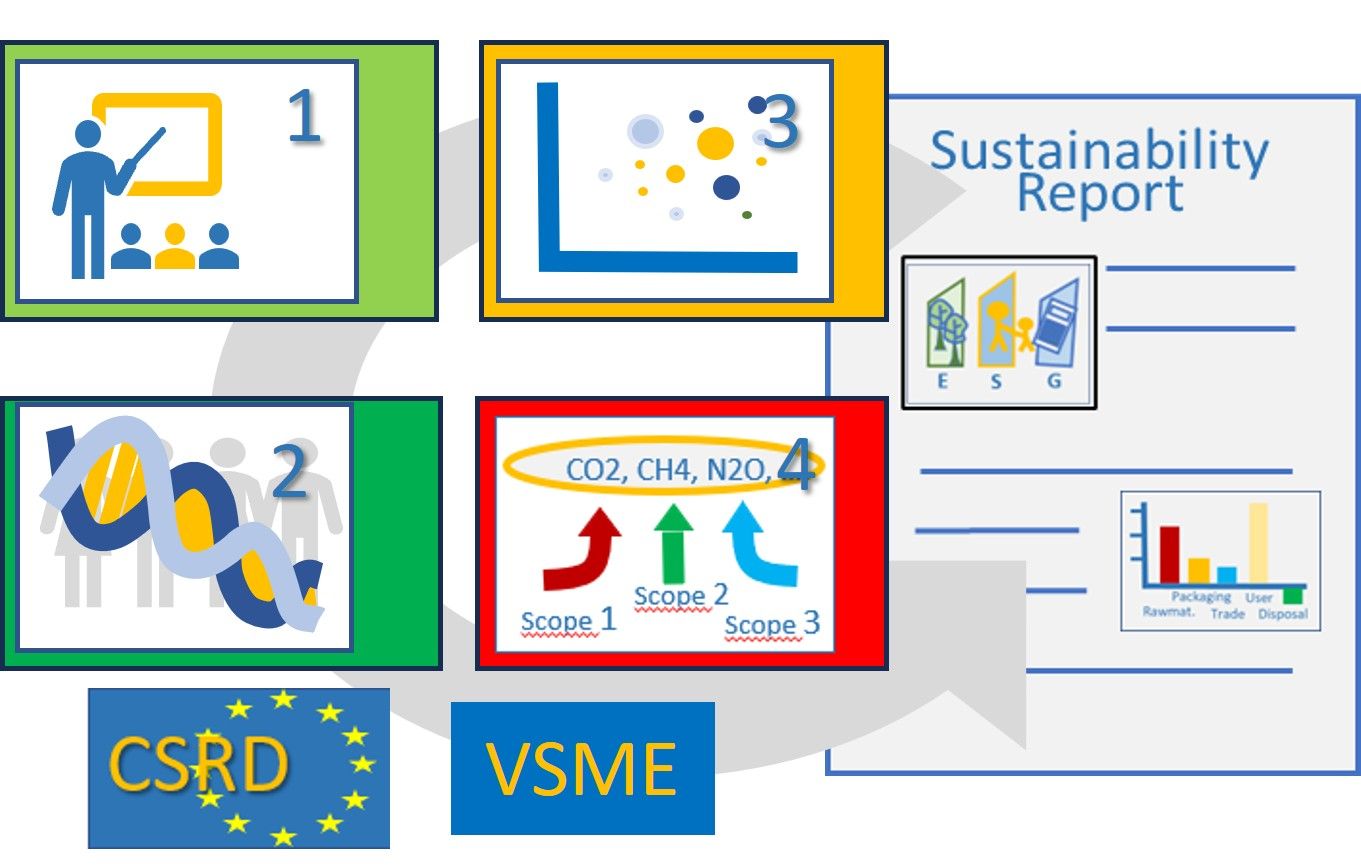Sustainability Transformation in 4 steps
With Climate3-LCA, you can create professional sustainability reports – automatically, error-free and independently of standards. From data collection to finished graphics and tables in just four manageable and targeted steps:
Everything in one tool and in-house, practically at the touch of a button.
After this short process, your company will be ready for the future.

Options for cooperation
- We accompany you along the way, calculate everything and prepare the sustainability report for you.
Or
- You implement the Climate3-LCA system and after a short time you will be able to carry out all climate calculations and prepare the sustainability report yourself.
Climate3-LCA führt Sie auf direktem Weg zu einem Nachhaltigkeitsbericht.

Four steps to successful sustainability transformation
1. Fundamentals & project launch
Sustainability check, SDG allocation, form core team, define roles for executive board/supervisory board, environment analysis, involve auditors (not for VSME).
2. Organisation & data collection
Review existing structures and adapt them for the future – without additional work, LkSG & EU taxonomy classification, establish governance systems, start initial data collection.
3. Materiality & strategy
Conduct stakeholder and double materiality analysis, identify risks and opportunities, create matrix, draft sustainability strategy.
4. Carbon footprint, targets and measures & sustainability report
Finalise ESG data, calculate carbon footprint (Scope 1–3), evaluate KPIs, determine specific PCFs/LCAs, define eco-controlling, create report.
Hier Demo buchen --> Climate3
Further specific environmental calculations with Climate3-LCA
Holistic sustainability begins where the CCF ends
A corporate carbon footprint (CCF) is an important first step – but it only shows part of the picture.
For a truly sustainable transformation, you need more in-depth analysis:
- Products & formulations: How does the footprint change with new raw materials or packaging?
- Investments: What impact do new plants, machinery or buildings have?
- Projects & measures: Which strategy has the greatest effect?
- Specific data from the supply chain for strategic raw materials
Climate3-LCA specialises in precisely this – and thanks to direct integration into your ERP system, it is the most efficient and cost-effective way to get a complete picture of your sustainability performance.
Our software automatically generates product- and project-specific calculations from your material and process data – quickly, accurately and without any additional effort.
This gives you not only a report, but also a sound basis for decision-making for your transformation. At the same time, it greatly enhances your sustainability report.
Environmental calculations with Climate3-LCA

Product Carbon Footprint (PCF)
The calculation of the PCF takes approx. 15-30 min:
- Utilisation of current parts lists in the ERP.
- Assignment of current processes.
- Allocation of the distribution channel
- Selection of the type of product utilisation and disposal.
- The CO2e emissions of the products are automatically output.
- This is followed by a detailed allocation of CO2 emissions to the individual segments of the supply chain.
- In addition, a life cycle assessment with 15+ environmental impacts is output (depending on data depth).

Company Carbon Footprint (CCF)
The scope of the CCF calculation is defined in customising (scope 1, 2 and certain parts of scope 3):
- Automatic allocation of consumers via bookkeeping and ERP accounting.
- Inclusion of IT data, business trips, office consumption, etc.
- Special consideration of waste
- CO2e emissions, etc. are automatically output in accordance with the sustainability report.
- KPIs for all recorded facts are displayed simultaneously for consumption control.
- In addition, a life cycle assessment with 15+ environmental impacts is output (depending on data depth).
Systematic approach to introducing sustainability in the company

Climate3 often starts from the beginning on the path to measurable progress in sustainability.
To ensure that the transformation in the company succeeds, Climate3's expertise is implemented throughout the entire organisation. The existing structures and personnel remain in place but are given additional, forward-looking tasks. These include environmental accounting:
- Company Carbon Footprint with Green-Controlling
- Product carbon footprint
- Data from the supply chain
The theoretical is combined with the calculation methods and merged into a solid basis for transformation.



